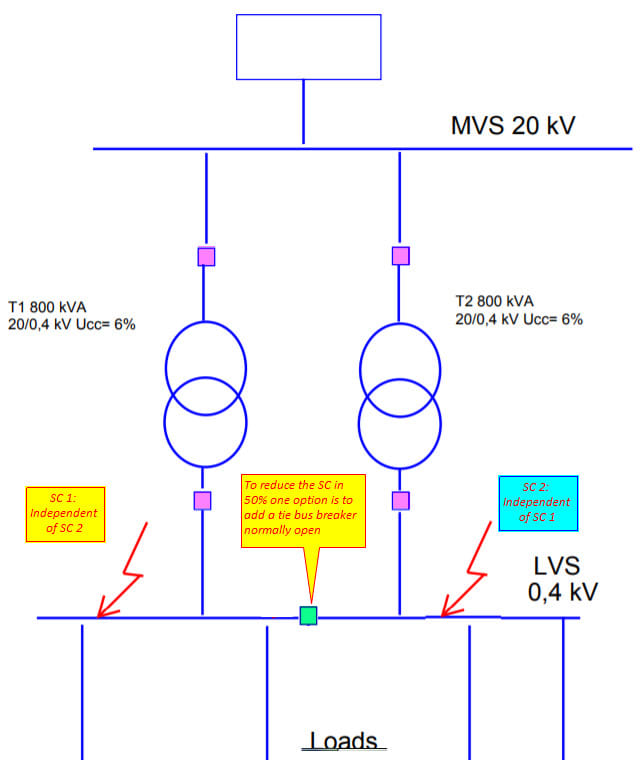Hello All,
I have to calculate the Short circuit rating of a LV Switchgear. ( See pdf attached). The LV Switchgear is fed from two 800kVA transformers running in paralell and each transformer is working at 50% Load. I have made a quick calculation of SC current but I need to know what case would be appropiate for sizing:
a. Short circuit current provided by two 800kVA trafo at 100% Load ( It will never happen, since the transformers are sized to provide N+1 redundancy)
b. Short circuit current provided by two 800kVA trafo at 50% Load
c. Short circuit current provided by one 800kVA trafo at 100 % load
For the calculation of one transformer 800kVA full load, I get 19,27kA. If I have two transformers 2x800kVA @50% Load, this value would be 2xTimes of SC provided from two 400kVA transformers? See table of cases:

Thank you so much in advance
I have to calculate the Short circuit rating of a LV Switchgear. ( See pdf attached). The LV Switchgear is fed from two 800kVA transformers running in paralell and each transformer is working at 50% Load. I have made a quick calculation of SC current but I need to know what case would be appropiate for sizing:
a. Short circuit current provided by two 800kVA trafo at 100% Load ( It will never happen, since the transformers are sized to provide N+1 redundancy)
b. Short circuit current provided by two 800kVA trafo at 50% Load
c. Short circuit current provided by one 800kVA trafo at 100 % load
For the calculation of one transformer 800kVA full load, I get 19,27kA. If I have two transformers 2x800kVA @50% Load, this value would be 2xTimes of SC provided from two 400kVA transformers? See table of cases:

Thank you so much in advance

